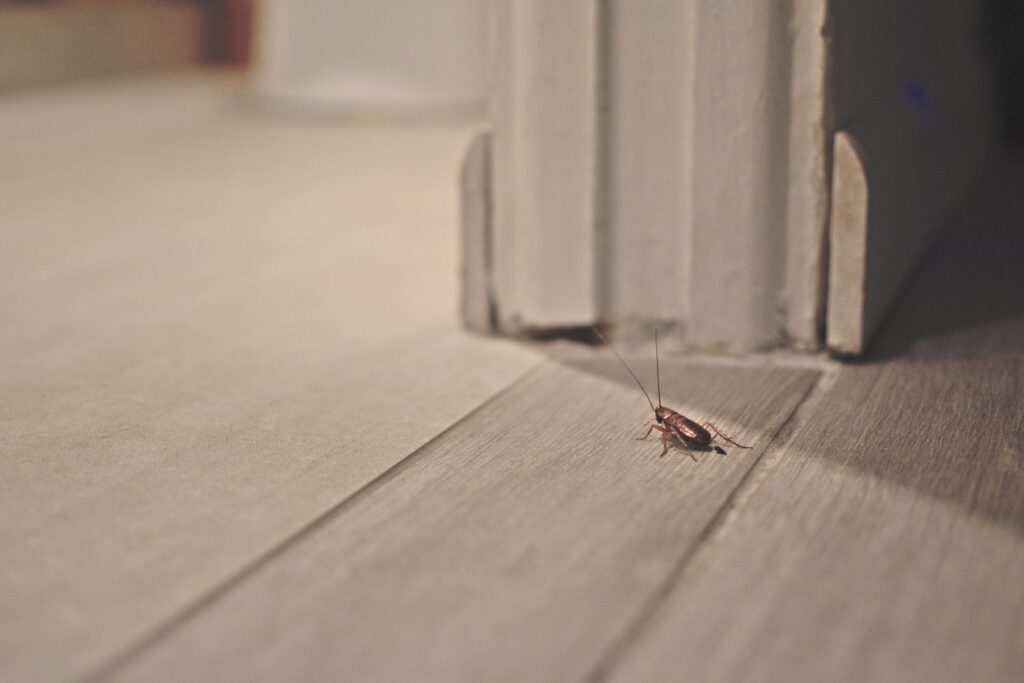Termites cause billions of pounds in property damage annually, silently destroying wooden structures from the inside out. These wood-eating insects can compromise the structural integrity of homes before homeowners even notice their presence, making effective home termite control essential for property protection.
Ultrasonic devices have emerged as an appealing solution in the pest control market. These pest repellers promise a chemical-free, hassle-free approach to keeping termites at bay by emitting high-frequency sound waves that supposedly drive pests away. The devices are marketed as modern, eco-friendly alternatives to traditional termite control penrith methods, attracting homeowners seeking convenient solutions.
But do these gadgets actually deliver on their promises? This article examines the scientific evidence behind ultrasonic devices for termite control, exploring whether they’re a legitimate defence against infestations or simply an expensive placebo. We’ll investigate what research reveals about their effectiveness and whether they deserve a place in your pest management strategy.
What Are Ultrasonic Pest Repellers and How Do They Claim to Work?
Ultrasonic pest repellers are electronic devices designed to emit high-frequency sound waves that supposedly drive away unwanted pests from homes and gardens. These plug-in units generate sounds typically ranging from 20,000 to 65,000 Hz—frequencies beyond the upper limit of human hearing but theoretically within the audible range of many insects and small animals.

The technology behind these devices centres on the emission of high-frequency sound waves that manufacturers claim create an inhospitable acoustic environment for pests. The sound waves allegedly penetrate through walls and bounce off surfaces, filling entire rooms with frequencies that pests find unbearable.
Claimed Mechanisms of Action
Manufacturers assert these devices achieve pest behaviour disruption through several mechanisms:
- Auditory irritation: The constant high-pitched noise supposedly causes discomfort and stress in pests, forcing them to flee the area
- Communication interference: The sound waves purportedly disrupt the ability of insects to communicate with each other through pheromones or natural signals
- Feeding disruption: Pests allegedly become too agitated to feed properly, encouraging them to seek quieter environments
- Mating prevention: The acoustic disturbance claims to interfere with reproductive behaviours and mating calls
Intended Target Pests
Marketing materials typically list an extensive range of target pests, including:
- Subterranean and drywood termites
- Cockroaches and ants
- Spiders and fleas
- Mice and rats
- Mosquitoes and flies
The appeal lies in their promise of a chemical-free, hands-off solution that requires nothing more than plugging the device into a wall socket. Manufacturers often advertise coverage areas of 800 to 1,200 square feet per unit, suggesting homeowners can protect entire properties with multiple devices strategically placed throughout their homes.
Is There Scientific Evidence Supporting Ultrasonic Devices for Termite Control?
The scientific evidence supporting ultrasonic devices for termite control remains surprisingly sparse. Researchers have conducted only a handful of peer-reviewed studies examining these devices’ effectiveness against termites, and the existing body of work reveals significant gaps in our understanding of their practical applications.
Study Design Problems Undermine Results
Most pest repeller studies suffer from fundamental methodological flaws that compromise their findings. Many experiments lack proper control groups, fail to account for environmental variables, or use sample sizes too small to draw meaningful conclusions. The absence of standardised testing protocols means comparing results across different studies becomes nearly impossible, leaving consumers without reliable data to inform their purchasing decisions.
Habituation Reduces Long-Term Effectiveness
Even when ultrasonic devices initially show some effect on termite behaviour, pests frequently demonstrate habituation over time. Termites exposed to continuous high-frequency sounds gradually become desensitised to the stimulus, resuming their normal feeding and nesting activities despite ongoing ultrasonic emissions. This adaptation process typically occurs within days or weeks, rendering the devices ineffective for long-term termite control effectiveness.
Laboratory Success Doesn’t Translate to Real Homes
The disconnect between laboratory findings and real-world performance presents another critical issue. Controlled laboratory environments where researchers can maintain specific sound frequencies, eliminate competing noise sources, and restrict pest movement bear little resemblance to typical home settings. Sound waves bounce off walls, furniture absorbs frequencies, and building materials create acoustic dead zones where termites remain completely unaffected. A device that shows promise in a laboratory chamber often fails spectacularly when installed in an actual home with complex structural elements and varying acoustic properties.
The limited scientific research available consistently points toward one conclusion: ultrasonic devices lack the proven track record necessary to recommend them as a primary termite control method.
How Effective Are Ultrasonic Devices Specifically Against Termites and Other Pests?
Do ultrasonic devices actually repel termites? Research shows alarmingly low termite repellency rates, with studies showing less than 20% effectiveness. These devices fail to create the protective barrier manufacturers promise, leaving homes vulnerable to costly infestations.
The numbers tell a concerning story. When researchers tested ultrasonic devices against various pest species, termites showed minimal response to the high-frequency emissions. The insects continued their destructive behaviour largely unaffected, moving through treated areas without the advertised discomfort or deterrence.
What about other common pests? Australian paralysis ticks provide a particularly revealing case study. Scientists exposed these parasites to multiple ultrasonic frequencies, expecting to observe escape behaviour or avoidance patterns. The tick response to ultrasound proved disappointing—specimens remained stationary or moved randomly, showing no systematic retreat from the sound source.
The failure extends across multiple pest categories:
- Termites: Less than 20% repellency in controlled conditions
- Ticks: Minimal to no escape response across frequency ranges
- Other insects: Inconsistent or negligible behavioural changes
Why do these devices fail so dramatically? Termites operate primarily through chemical communication and tactile sensing rather than auditory cues. Their biological makeup simply doesn’t prioritise sound detection in the frequency ranges these devices emit. The insects navigate through pheromone trails and physical contact with colony members, making ultrasonic interference largely irrelevant to their daily activities.
The structural complexity of homes creates another obstacle. Sound waves dissipate quickly when encountering walls, furniture, and building materials. Termites often infest hidden areas within wall cavities, beneath foundations, or inside wooden structures where ultrasonic emissions cannot penetrate effectively. A device placed in one room provides no protection for the rest of the property.
What Do Experts and Regulatory Agencies Say About Ultrasonic Pest Repellers?
The Federal Trade Commission has taken direct action against manufacturers making unsubstantiated claims about ultrasonic pest control devices. The regulatory body issued warnings specifically targeting companies that advertise these products as effective alternatives to professional pest management without providing scientific evidence to support such assertions.
Pest control regulations require manufacturers to substantiate any claims about product efficacy before marketing them to consumers. The FTC’s enforcement actions have focused on companies claiming their ultrasonic devices can eliminate or prevent pest infestations, particularly when these claims lack proper testing data or peer-reviewed research backing.
Professional entomologists and pest management experts consistently discourage homeowners from relying on ultrasonic devices for termite prevention. The National Pest Management Association and similar professional bodies have issued statements clarifying that these devices do not meet industry standards for effective pest control. Expert recommendations emphasise that ultrasonic repellers should never replace established termite management strategies.
Independent pest control specialists classify ultrasonic devices as ineffective alternatives to conventional methods. The consensus among professionals points to several critical failures:
- Lack of reproducible results in controlled field studies
- Inability to penetrate walls, furniture, or other obstacles that block sound waves
- No demonstrated long-term deterrent effect on termite colonies
- Failure to address existing infestations or prevent new ones
Academic researchers studying termite behaviour have found no mechanism by which ultrasonic frequencies would reliably repel or eliminate termite colonies. The insects’ communication systems operate on different frequencies, and their feeding behaviour shows no disruption when exposed to the sound waves these devices produce. Regulatory agencies continue to monitor the market for misleading advertising whilst experts advocate for evidence-based pest management approaches.
What Are More Reliable Alternatives for Home Termite Control?
Proven termite control methods deliver measurable results where ultrasonic devices fail. Homeowners should focus on evidence-based strategies that address termite infestations at their source.
1. Physical Barriers
Physical barriers form the first line of defence against termite entry. Sealing cracks in foundations, gaps around pipes, and openings near wooden structures prevents termites from accessing your home. Installing metal mesh screens over vents and maintaining proper drainage to eliminate moisture accumulation creates an inhospitable environment for these pests. Regular inspections of wooden structures for signs of damage allow early detection before colonies establish themselves.
2. Chemical Treatments
Chemical treatments provide targeted protection through soil treatments and wood preservatives. Liquid termiticides create protective zones around foundations, whilst bait systems attract termites to poisoned food sources that they carry back to their colonies. These treatments require precise application at specific concentrations to remain effective. For more detailed information on chemical barriers for termites, you can explore further.
3. Professional Pest Management Services
Professional pest management services offer comprehensive solutions that DIY methods cannot match. Licensed technicians conduct thorough property inspections using specialised equipment to detect hidden infestations behind walls and beneath floors. They develop customised treatment plans based on termite species, infestation severity, and property characteristics. Annual inspections ensure long-term protection, with professionals monitoring bait stations and reapplying treatments as needed to maintain barriers against reinfestation.
4. Alternative Methods
In addition to the aforementioned strategies, homeowners can also consider alternative methods such as natural remedies or non-toxic solutions that have shown effectiveness in managing termite populations without the use of harsh chemicals.
Why Are Ultrasonic Devices Still Being Sold Even Though They’re Ineffective?
Eco-friendly pest control marketing promotes ultrasonic devices as chemical-free alternatives that appeal to environmentally conscious homeowners. Manufacturers highlight the lack of toxins, making these products attractive to families with children and pets who want to avoid traditional pesticides.
Consumer convenience is a major factor driving sales, as these plug-in devices require no maintenance, professional installation, or ongoing treatment schedules. The promise of a “set it and forget it” solution resonates with busy homeowners looking for quick fixes to pest problems without the hassle of regular inspections or reapplications.
The devices take advantage of gaps in consumer understanding about pseudoscience in pest control, using technical-sounding terms like “electromagnetic waves” and “ultrasonic frequencies” to create an impression of scientific legitimacy. Marketing materials often include vague claims and selective testimonials instead of peer-reviewed research.

Several factors contribute to their continued presence in the market:
- Low production costs allow manufacturers to make a profit even with modest sales volumes
- Regulatory loopholes permit marketing as long as claims avoid specific guarantees
- Positive placebo effects occur when customers mistakenly believe that natural pest fluctuations are due to the device
- Minimal risk perception makes the relatively small investment seem worth trying
The combination of appealing marketing stories and consumer desire for easy, non-toxic solutions creates a persistent market, despite clear evidence that these devices fail to provide effective termite control.
Should You Rely on Ultrasonic Devices for Home Termite Control?
No—the evidence clearly shows these devices don’t work. Protecting your home from termites requires proven methods backed by scientific research, not marketing promises.
When considering termite prevention advice, prioritise strategies with documented success rates. Professional inspections identify vulnerable areas before infestations develop. Chemical barriers and bait systems provide measurable protection that ultrasonic devices simply cannot match.
Understanding ultrasonic device limitations helps homeowners avoid wasting money on ineffective solutions. These gadgets offer false security whilst termites continue damaging your property undetected.
Effective home pest control demands evidence-based approaches:
- Regular professional inspections (annually or bi-annually)
- Physical barriers around foundations
- Moisture control to eliminate attractive conditions
- Targeted chemical treatments when necessary
The question “Home Termite Control: Do Ultrasonic Devices Actually Work?” has a straightforward answer: they don’t. Base your pest control decisions on scientific data rather than clever advertising. Your home’s structural integrity depends on methods that actually protect against termite damage.
Related : Top 7 Termite Control Services in Sydney and How They Compare





